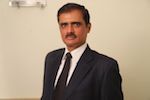Research tells us that most of us are underleveraged to the extent of 95 per cent with only about five per cent of our abilities being used. This is not because of lack of skills or talent, but due to an application gap. Primarily, we are often too busy to ?nd the time to discover and bring forth our full potential. Worse still, many of us are blissfully ignorant that our busy state of mind is what blocks our rise to our full potential.
For a ful?lled work and life experience, we need to move beyond the ‘busyness’ trap.
Busyness is a silent killer and is probably the biggest, most debilitating corporate disease. It is a 3C’s disease: Contagious, Chronic and Cancerous
Contagious: It affects everybody around one or working with one
Chronic: The longer one remains affected, the deeper one sinks
Cancerous: Unless detected and prevented early, it can be terminal
Being busy is like falling into a trap that one struggles to come out of. Like stepping into marshy land, the longer one stays there, the deeper one sinks.
This busyness is a vicious cycle, similar to the situation that Abhimanyu encountered in the Mahabharata. He was trapped inside a Chakravyuh and did not know how to come out. Similarly, in the corporate world, busyness leaves an individual occupied with ?re?ghting and constantly functioning in a reactive mode, where tomorrow is no better than today. Since the future can be created only in a proactive mode, busy people cannot create a future for self or for the organisation they work for, simply because they do not have time for the future!
Busyness has serious and lasting consequences on one’s:
Career: It brings down one’s effectiveness and productivity, and hampers career growth.
Organisation: It adversely impact the results attained, the cost bene?t of efforts deployed and the growth plans.
Colleagues: Busyness and its aftereffects are contagious — Just like a chain reaction or a relay race, where one person’s busyness and delay affects each person at successive stages.
There is a big difference between successful and unsuccessful leaders. The former are meaningfully engaged, while the latter are just busy. Meaningful engagement requires connecting with a purpose, and not just staying aimlessly trapped in doing myriad activities, the way busy people are.
Symptoms of busyness
It is not dif?cult to detect the onset of the busyness disease. It has two components:
Physical: Missing deadlines, continuous ?re?ghting, struggling to be ready on time for anything and repeating mistakes are all physical components of the disease.
Psychological: Tiredness, low energy levels, tendency to be overwhelmed by the tasks at hand, feeling of being victimised, blaming others, resorting to self-defense and basking in past glori?cation are all psychological signs of the disease.
Is busyness real or imagined? Is it a state of matter or a state of mind?
Busyness prevails in the absence of an organised mind, just like darkness does in the absence of light! The clutter is not circumstantial, it exists within. It is not about how much one works, but how one works that makes one busy.
Imagine how the time it will take to access a book one needs from a library — where lakhs of books are well organised —versus the time it will take if all those books were to be drawn out, jumbled up, and spread on a table. These two scenarios re?ect two very different states of mind of two different types of people: organised and unorganised minds, respectively.
Busyness implies that one is falling short of time for a task. This shortfall is not necessarily due to higher quantum of work at hand or having less physical time, but often just an issue of prioritisation and time ef?ciency. It is about productive time becoming compromised due to unproductive time that is consumed by unorganized and unscheduled activities.
Busyness is not real. It is just a state of mind, and one can come out of it if one wants. Since the root of this disease is in the mind, the solution also starts from the reorientation of the mind.
Way out of the ‘Busyness Chakravyuh’
It is important to understand that business can start only when the busyness ends. The total time spent on any task has three components:
1. Processing time
2. Waiting time
3. Idle time
Often, the culprits are these unproductive components of waiting and idle time, not the productive processing time. Therefore, the way out is for the leaders to identify and spend less time on access, and more time on the process to create business success.
It is possible to escape the Busyness Chakravyuh completely by following a few steps:
Resolve: It has to start with one’s resolve. The more intense one’s resolve is, the higher are the chances of conquering busyness.
Structure: One needs to transform and work in a structured approach with a direction, method and plan.
Toolkit and mechanisms: There are several toolkits available to help keep one on track, like time priority plan, month planner, to-do list, pocket diary and self-development learning books.
Use of mechanisms, such as time slot technique, dedicated solo time and work regimentation also helps. Seeking a professional coach or a mentor can also help one through this withdrawal process.
In conclusion, therefore, we need to understand that in today’s working world, while busyness appears as a reality (seen happening around), it is not a real entity. It is a state of that results from an absence of an organised approach to work. The good part of it being a state of mind means that it can be worked on and conquered, driven by a strong resolve, with a structured work approach toolkit /technique and a little initial guidance/handholding.
A professional coach helps clients clarify their thoughts and leads maximisation of their potential. Find the right coach for you now!
The International Coaching Federation (ICF) defines coaching as partnering with clients in a thought-provoking and creative process that inspires them to maximise their personal and professional potential. It is the world’s largest organisation leading the global advancement of the coaching profession and fostering coaching’s role as an integral part of a thriving society.
Founded in 1995, its 35,000-plus members located in more than 140 countries and territories work towards the common goals of enhancing awareness of coaching and upholding the integrity of the profession through lifelong learning and upholding the highest ethical standards. Through the work of its six unique family organisations, ICF empowers professional coaches, coaching clients, organisations, communities and the world through coaching.
In India, ICF is represented by six vibrant chapters, all led by volunteers — ICF Bengaluru, ICF Chennai, ICF Delhi, ICF Mumbai, ICF Pune and ICF Hyderabad.
 The author, Yatin Samant has a proven record of 34 years of corporate working across a diverse set of industries, geographies and culture, in different functions —P&L head , SBU head/ CEO. An early retirement enabled him to dedicate himself to the cause of leadership development and human leveraging in general, pioneering the ‘inside-out’ learning pathway v/s conventional ‘outside-in ‘ pathway. Samant is a PCC credentialed coach with ICF since 2012 with more than 1000 hours of coaching experience. He has been on the Board of Education Organisation in India as independent director and has published two poetry books and over 100 articles in English and Marathi.
The author, Yatin Samant has a proven record of 34 years of corporate working across a diverse set of industries, geographies and culture, in different functions —P&L head , SBU head/ CEO. An early retirement enabled him to dedicate himself to the cause of leadership development and human leveraging in general, pioneering the ‘inside-out’ learning pathway v/s conventional ‘outside-in ‘ pathway. Samant is a PCC credentialed coach with ICF since 2012 with more than 1000 hours of coaching experience. He has been on the Board of Education Organisation in India as independent director and has published two poetry books and over 100 articles in English and Marathi.



